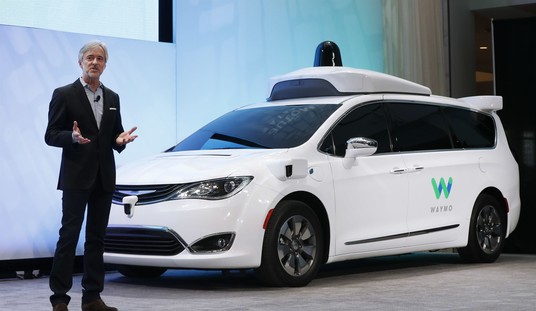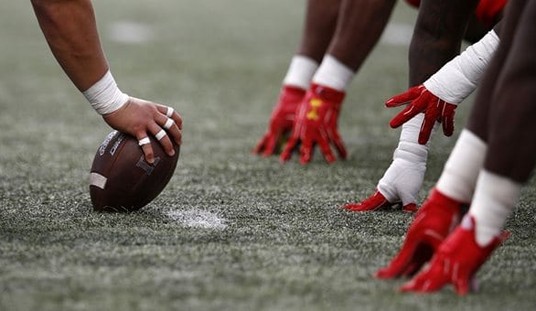
Three states were key to Trump’s 2016 victory. He won the presidency by winning Pennsylvania by 68,236 votes, Michigan by 11,837 and Wisconsin by 27,257. The race was decided by 107,000 votes which represented 0.09% of all votes cast. Obama had comfortably won all three states in 2012.
The Hill’s Reid Wilson conducted a study hoping to identify which counties might determine the winner of the 2020 election. Wilson interviewed 24 political scientists, strategists, and observers and has compiled a list of ten counties he believes will choose the next US president.
The election is still fourteen months away. I realize we live in a world where politics are constantly shifting and a misstep can change a candidates’ fortune in a New York minute which makes this, in reality, an impossible endeavor. Still, it’s interesting to look at analysis from all sources to gain insight into the current political landscape. So, may I present to you the results of Wilson’s analysis – the ten US counties he considers will be the most influential in 2020.
1. Erie County, PA
Trump won this county in 2016, which was the first time a Republican has won since Ronald Reagan in 1984. Wilson points out that 50% of voters are “registered Democrats, and just 36 percent are Republican. Democrats hold five of seven county council seats. But those Democrats are not coastal progressives, Pennsylvania politicos say.”
Terry Madonna, director of the Center for Politics and Public Affairs at Franklin and Marshall College, told Wilson, “What you have is a working-class county that’s socially conservative. Many Democrats there believe that their party has deserted them and become the party of big cities.”
Analysis: In 2016, Trump beat Democratic nominee Hillary Clinton there by 1.6 percentage points — about twice the margin by which he won Pennsylvania’s electoral votes. In 2008 and 2012, Obama won Erie County by double-digit margins. Democratic success there will be a sign that the party has bridged the divide with its own voters who feel left behind.
2. Sauk County, WI
Brian Reisinger, a Republican strategist who was raised in Sauk County, said, “Back in the day, Wisconsin farm country used to more consistently go for Democrats. The rural shift toward Republicans is partially offset by the number of Madison-types who are crossing over the county line to live in small towns where taxes are lower and the world makes more sense.”
Analysis: Sauk County has predicted the winner of Wisconsin’s electoral votes in nine of the past 10 presidential elections. Trump was the first Republican to carry the county in 28 years, when he won it by just 109 votes out of about 30,000 cast. He carried Wisconsin’s electoral votes by about eight-tenths of a percentage point.
3. Muskegon County, MI
Wilson spoke to RNC official Holly Hughes. “Muskegon will be indicative of the statewide vote in the next election.”
Analysis: Today, its economy is dominated by a struggling manufacturing industry and a growing health care sector. Though the county has voted Democratic in every presidential election since 1992, Clinton won it by just 1,200 votes — the closest margin of any county in Michigan, which gave its electoral votes to Trump.
If Trump continues making inroads there, he would keep Michigan’s electoral votes in his column.
4. Maricopa County, AZ
This county is slowly moving leftward. Mike Noble, a Republican pollster in Phoenix, pointed out that Trump won this county by 3%, which is a slightly lower margin than his statewide win. He said, “The areas most at risk for Republicans are middle-class precincts where college-educated residents tend to make between $50,000 and $100,000 a year. It’s in these suburban areas where we are seeing the biggest shift in party voter preference. Those [who] are college educated or above is where the GOP is currently hurting.”
Analysis: Only one Republican in recent history has won a statewide election without winning Maricopa County.
Phoenix’s rapid growth is being fueled by young workers in search of a good job — who tend to bring their blue-state voting habits with them. In 2018, Kyrsten Sinema beat Republican Martha McSally in Maricopa County and became the first Democrat to win a Senate seat in Arizona since 1988.
5. Tarrant County, TX
Republicans have been losing support in Texas for a while now.
Democratic strategist Ed Espinoza said, “In Tarrant, you still have some of those Country Club Republicans. There is a greater discomfort among Republicans with the rhetoric coming from the president and the party in Texas than there might be in Dallas or other places.”
Analysis: Republican margins of victory are declining even in historically red regions. Republicans there peaked in 2004, when Bush scored 62 percent of the vote, or 349,000 votes. Twelve years later, Trump won just 52 percent of the vote, or 346,000 votes. Two years after that, then-Rep. Beto O’Rourke (D) won Tarrant County by 4,000 votes over Sen. Ted Cruz (R).
Tarrant County hasn’t voted for a Democrat since Lyndon Johnson won his home state in 1964. But its booming population may change that: Since Republicans began losing market share there, about 40 percent of the county’s residents are new.
6. New Hanover County, NC
John Wynne, a North Carolina elections analyst, told Wilson that, “Like most of the state’s larger cities, Wilmington has seen an influx of urban white liberals, making the city more Democratic. At the same time, affluent retirees, who tend to vote Republican, are settling along the beaches.”
Analysis: Dominated by Wilmington, New Hanover was part of the Democratic Solid South until Richard Nixon’s election in 1968. Since then, it has only voted for one Democratic presidential candidate — fellow Southerner Jimmy Carter.
But the GOP’s historic advantage there is shrinking. Obama came within 1,400 votes of winning New Hanover County in 2008, and Trump became the first Republican to win less than half the vote since George H.W. Bush split the conservative vote with Ross Perot in 1992.
Trump won the county by 2.9 percentage points. He won North Carolina by 3.6 points.
7. Peach County, GA
DuBose Porter, a former chairman of the state Democratic Party, explained that, “It’s struggling, like most rural communities are in Georgia. We’re losing health care providers. We’re losing hospitals. We’re losing manufacturing, and we’re not replacing that with anything.”
Analysis: About a hundred miles south of Atlanta lies one of the country’s clearest examples of a combined racial and geographic divide. In the middle of rural Georgia, Peach County’s residents are about half white and 45 percent African American. About half live in its cities, and half live in rural areas.
Those divides might as well be partisan stand-ins. Peach County is one of a few hundred pivot counties in America, counties that voted for Obama twice and Trump in 2016. In 1968, the segregationist George Wallace took 42 percent of the vote there.
In a county of just 27,000 people, every vote counts. Last time around, Peach County stood as a bellwether for the entire state. Trump took 50.3 percent of the vote, almost perfectly matched his performance statewide, 50.4 percent. In 2018, Republican Brian Kemp scored 52 percent of the vote in his bid for governor, beating out Democrat Stacey Abrams by just under 500 votes.
8. Washington County, MN
Former Gov. Tim Pawlenty (R) said, “President Trump has already transformed rural politics in his favor, so increasing support from suburban voters will be key to the outcome of the election.”
Analysis: Minnesota represents one of a small number of states that voted for Clinton in 2016 that presents Trump with a chance to expand his map in 2020. If he wants to win here, he must carry Washington County, along the border with Wisconsin.
The first white settlers arrived along the banks of the St. Croix River to log its rich forests. In 1838, early residents in Stillwater, the county seat, formally petitioned Congress to create a new state called Minnesota. Today, its residents are more likely to commute to the booming Twin Cities. A fifth of its residents have moved in since 2000, blending its rural roots with exurban sprawl.
Washington County voted twice for George W. Bush, then twice for Obama. Clinton carried Washington County by just 1.8 percentage points, almost exactly the margin by which she carried Minnesota as a whole.
9. Hillsborough County, NH
Hillary Clinton won New Hampshire by 3,000 votes. In Hillsborough County, however, Trump won by 500 votes. Approximately 25% of the state’s voters live in this county. GOP strategist Mike Dennehy said, “Hillsborough tends to represent the state in terms of electoral outcomes.”
Analysis: Hillsborough was a historically Republican county, dating back to the 19th century. But party affiliations have changed as more Bostonians move north and commute back to the city; Obama won Hillsborough twice.
And while Trump won narrowly in 2016, there are signs of serious discontent. The 2018 midterm elections wiped out many Hillsborough members of the state legislature; today, Democrats hold two-thirds of the state House districts in the county.
10. Lincoln County, ME
“Lincoln County reflects many of today’s most fraught political dividing lines all in one, and all well-balanced. For two centuries it has been a working-class hub, home of shipbuilding industries and the lobster fisheries that give Maine its distinctive contribution to American cuisine,” said Maine-based journalist Colin Woodard.
He added that, “At the same time, its picturesque islands and landscapes have made it a longtime tourism destination, from the Gilded Age to today. A mix of working class fishermen, deep-pocketed retirees (both liberal and conservative) and tourism-dependent workers and business owners, partisan political contests are highly contested at almost every level, from town councils and the state legislature to Congress and the presidency.”
Analysis: Those rival factions fought to a near draw in 2016. Clinton won Lincoln County, 47.6 percent to 45.2 percent — nearly identical to her 2-point win in the popular vote. If Trump keeps his blue-collar base, or if ancestral Republicans break against him and cost him the White House, Lincoln County will be the microcosm through which to view the 2020 outcome.
Though there seems to be movement to the left in many of these counties, it will be interesting to see if traditional Democrats are willing to support any of the far left candidates (outside of Biden) who are currently competing for the nomination. All of the counties on this list are comprised of working-class, middle-class Americans who might not quite be ready for open borders, free health care for illegals, late-term abortions or the rest of the new policies favored by the left. It’s disheartening to think that conservative or moderate Democrats might be ready to take the leap into socialism.
If any one of the Democratic candidates currently running should win the presidency, the United States, as we’ve known it, will be gone. And I hope that voters understand that.













Join the conversation as a VIP Member